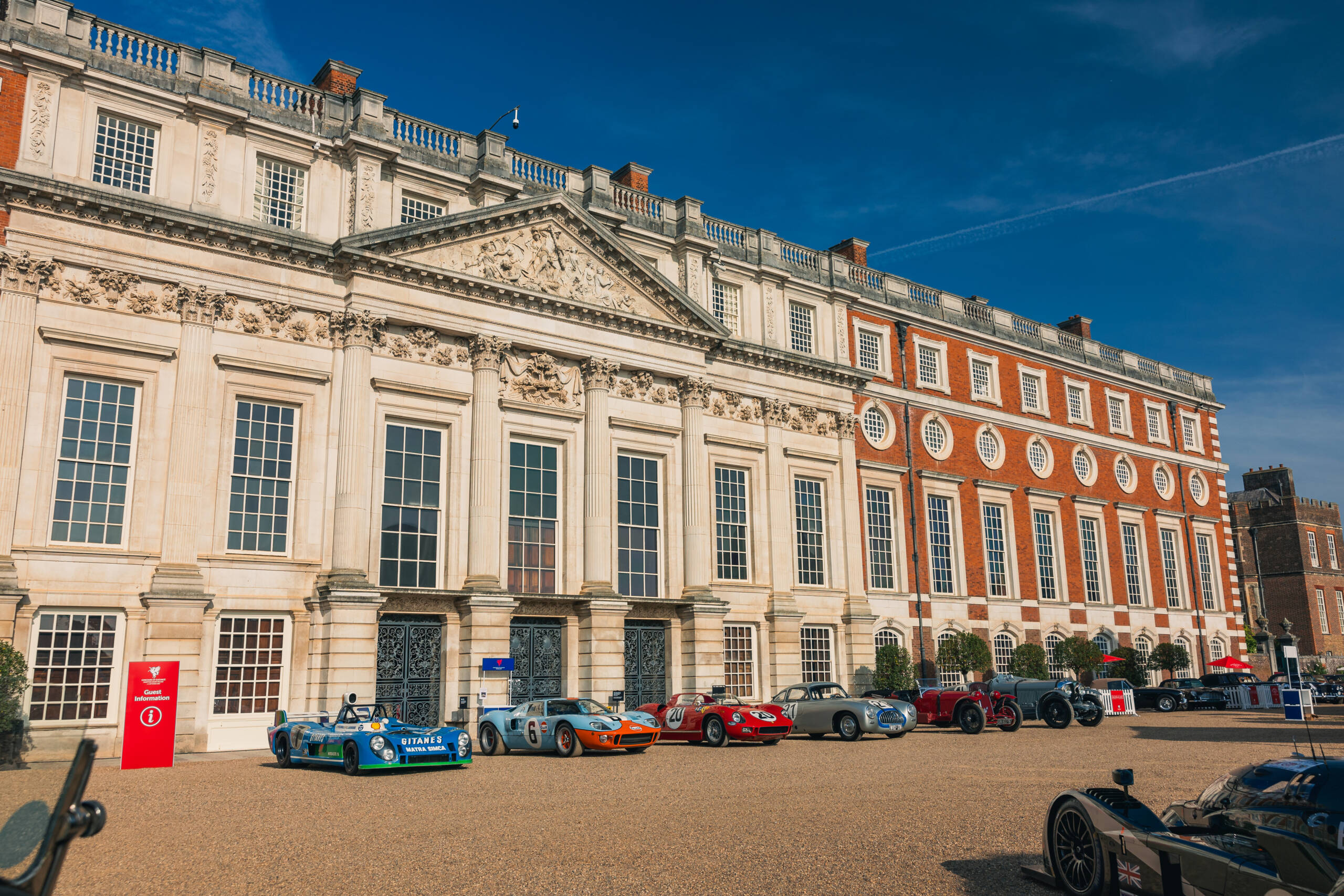
Le Mans Winning Jaguar C-type Leads Jaw-Dropping Display
The Concours of Elegance is delighted to announce that this year’s show will celebrate the golden age of sports car racing with a display of highly significant 1950s competition machinery. Legendary racing cars from the most storied marques of all – including Ferrari, Jaguar and Lagonda - will line up in the stunning grounds of Hampton Court Palace from the 30th of August to 1st September, for the 13th edition of Europe’s premier concours d’elegance event. The sports car selection will include the following cars, which will join a display of over 60 of the rarest and most significant motor cars, all drawn from leading private collections around the world.
The display will be led by arguably the most significant sports racing car of the 1950s, the 1953 Le Mans winning Jaguar C-type. With ‘c’ standing for competition, the C-type was designed from the outset to be competitive against the clock on the track and road courses around the world. It combined running gear derived from the XK120 road car with a lightweight tubular spaceframe chassis. The aerodynamic aluminium body was designed by Jaguar Chief Engineer William Heynes, while the cutting-edge spaceframe was jointly developed by Heynes, R J (Bob) Knight and later Malcolm Sayer.

The car that will be on display is the most significant of the 53 C-types built between 1951 and 1953: the 1953 Le Mans winning Jaguar Works car, which was driven to victory by Tony Rolt and Duncan Hamilton against very strong opposition. The car in question, chassis XKC 051, was one of three lightweight C-types built by Jaguar for the 1953 Le Mans 24 hours. Remarkably, it averaged 105.87mph over the race distance – the first car to breach the 100mph barrier – covering over 2500 miles over the course of the race. The ‘Works’ C-types were given several upgrades over the other C-types competing that year, with thinner gauge aluminium bodywork, a lighter fuel tank and very powerful disc brakes – the non-Works cars had to make do with drums. The in-line six engine was also more potent thanks to its Weber carburettors – feeding more fuel into the engine and giving it more power than the standard SU carb equipped cars. In ‘Works’ trim, the C-types put out over 220bhp, giving the featherweight machines very strong performance. Now part of a significant collection that includes several other Le Mans winners, this genuine piece of British motorsport history is all set to star at this year’s show.
1956 Jaguar D-type – once sold by Bernie Ecclestone
The show will also welcome a fine example of Jaguar’s similarly iconic D-type racer, a car with a colourful backstory. The D-type was car that followed the C-type in the lineage of great competition Jaguars. The car that will be on show at Hampton Court, XKD518, was unusual in that it was finished in red – one of just two or three to be so specified. It has been suggested, somewhat humorously by one Jaguar historian that this was done in an attempt to break into the Italian privateer racing market.
XKD518’s first private owner, racer Peter Blond purchased the car for £3500 from a certain Bernie Ecclestone – who presumably drove a hard bargain. The car would go on to compete at events around the UK in ’56 and ’57 in Blond’s ownership, racing at Goodwood, Silverstone and Oulton Park. The car later passed between enthusiast owners before being bought by Led Zeppelin manager Peter Grant, who kept the car until the early 1980s, when it was exported to the USA. In the past few years it has been treated to a sympathetic restoration, and now presents in wonderful condition, whilst also standing out as one of the few D-types with a full ownership history from new.
Lagonda V12 DP115 racers reunited
Also on show will be something unique: a brace of particularly special pioneering competition Lagondas – appearing together in the UK for the first time following a full restoration. The Lagonda DP115 was created by the then new Aston Martin and Lagonda boss David Brown to be a ‘Ferrari beater’, and the car that would re-establish the Lagonda name in the upper echelons of the automotive world. Lagonda had won at Le Mans fewer than 10 years earlier, and Brown wanted it to rival marques such as Bentley once again – both on track and on the road.
Based on the sweet handling six-cylinder Aston Martin DB3S – which had always been outgunned power wise at Le Mans by larger engined machines – DP115 was introduced with a newly developed V12 – an engine Brown envisaged powering both Lagonda’s competition machinery, as well as its luxury road cars. Lagonda’s pre-war designer ‘Willie’ Watson was hired to lead the development of an all-new, aluminium 4.5-litre V12 motor that put out over 280bhp, driving through a 4-speed box, all housed in a lengthened DB3S chassis.
While it packed the firepower to rival the larger engine machines for overall victory at Le Mans and other top events, the modifications to the DB3S chassis led to somewhat unbalanced, unpredictable handling. As a result, DP115 saw limited success on track. At Le Mans in 1954 the first of the two cars was sitting 3rd after two hours, before it left the road in bad weather and had to be retired. Just one further DP115 was built, competing more sparingly. This year’s show will re-unite these fascinating pieces of British automotive history, displaying them in public for what is thought to be the first time.






